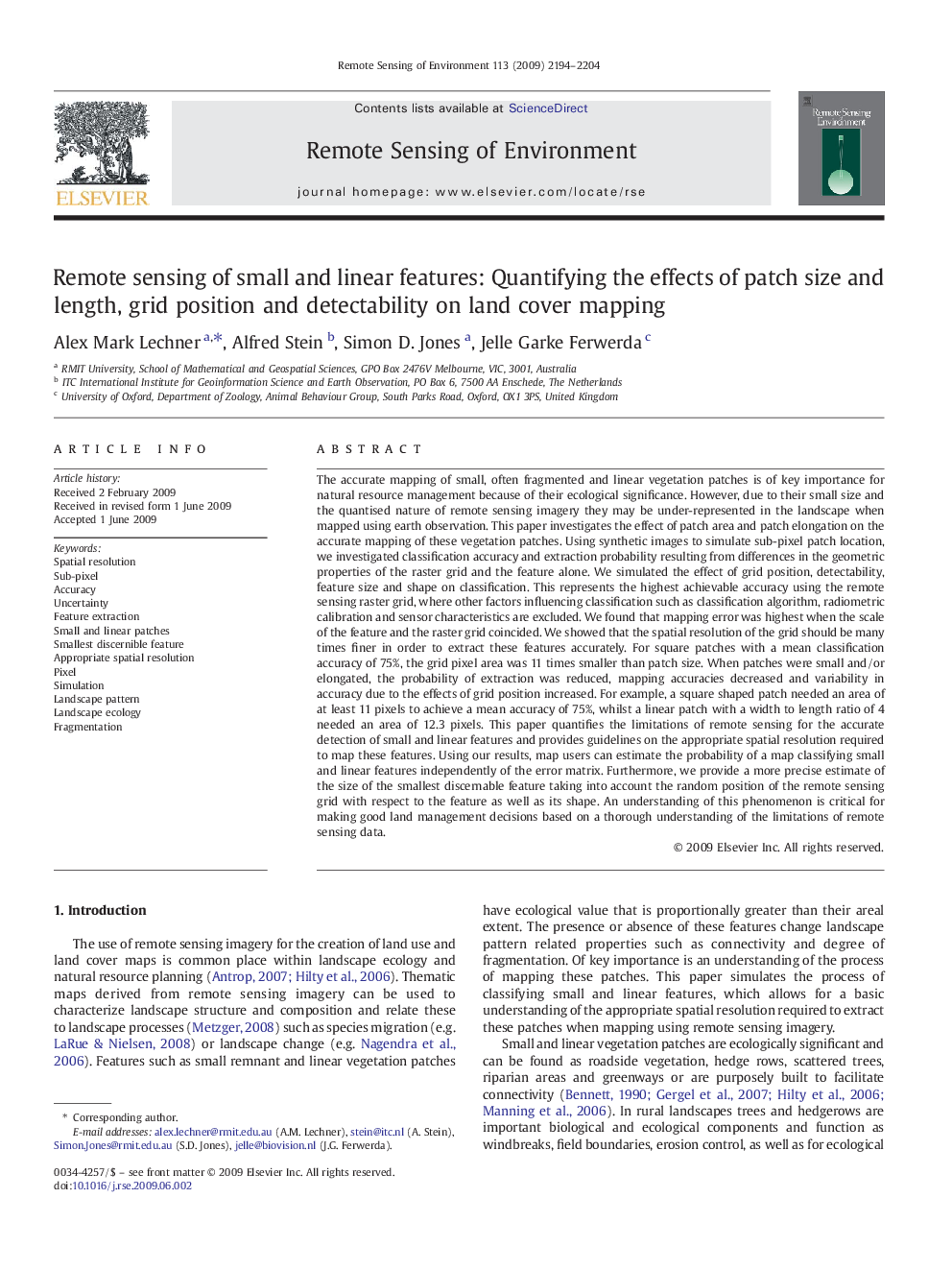| کد مقاله | کد نشریه | سال انتشار | مقاله انگلیسی | نسخه تمام متن |
|---|---|---|---|---|
| 4459710 | 1621311 | 2009 | 11 صفحه PDF | دانلود رایگان |

The accurate mapping of small, often fragmented and linear vegetation patches is of key importance for natural resource management because of their ecological significance. However, due to their small size and the quantised nature of remote sensing imagery they may be under-represented in the landscape when mapped using earth observation. This paper investigates the effect of patch area and patch elongation on the accurate mapping of these vegetation patches. Using synthetic images to simulate sub-pixel patch location, we investigated classification accuracy and extraction probability resulting from differences in the geometric properties of the raster grid and the feature alone. We simulated the effect of grid position, detectability, feature size and shape on classification. This represents the highest achievable accuracy using the remote sensing raster grid, where other factors influencing classification such as classification algorithm, radiometric calibration and sensor characteristics are excluded. We found that mapping error was highest when the scale of the feature and the raster grid coincided. We showed that the spatial resolution of the grid should be many times finer in order to extract these features accurately. For square patches with a mean classification accuracy of 75%, the grid pixel area was 11 times smaller than patch size. When patches were small and/or elongated, the probability of extraction was reduced, mapping accuracies decreased and variability in accuracy due to the effects of grid position increased. For example, a square shaped patch needed an area of at least 11 pixels to achieve a mean accuracy of 75%, whilst a linear patch with a width to length ratio of 4 needed an area of 12.3 pixels. This paper quantifies the limitations of remote sensing for the accurate detection of small and linear features and provides guidelines on the appropriate spatial resolution required to map these features. Using our results, map users can estimate the probability of a map classifying small and linear features independently of the error matrix. Furthermore, we provide a more precise estimate of the size of the smallest discernable feature taking into account the random position of the remote sensing grid with respect to the feature as well as its shape. An understanding of this phenomenon is critical for making good land management decisions based on a thorough understanding of the limitations of remote sensing data.
Journal: Remote Sensing of Environment - Volume 113, Issue 10, October 2009, Pages 2194–2204